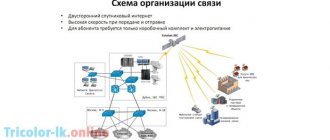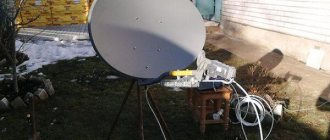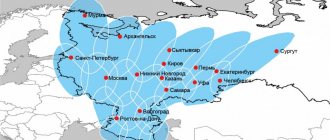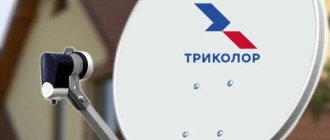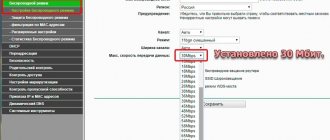Often, choosing satellite Internet becomes a justified decision if there is no other way to provide yourself with a network connection. For example, it is advisable to install satellite dishes within remote regions of the country where there are no operator base stations that allow using mobile Internet at fairly high speeds. If you choose satellite Internet, then in this case information will always be transmitted in both directions, using the power of satellites. This technology has become quite widespread, but at the same time it has pronounced advantages and disadvantages.
Features and Benefits
If you analyze the offers from common providers, they often offer their equipment from a specific manufacturer. Solving the connection issue is not difficult, since you will be immediately advised on all issues, will be helped with the purchase of equipment and its commissioning. It is worth highlighting first of all the advantages of satellite Internet.
For example, it becomes possible to gain access to the Internet in places where it is simply not possible to use the mobile Internet. This applies to holiday villages and other settlements that are located quite far from large cities. As for terrestrial communications, they will not play any role at all. There are no towers, wired systems or other circuits that could affect the quality of the Internet.
WWW on the ISS
The crew of the International Space Station was able to access the Internet for the first time in 2010. Access to the World Wide Web was provided by NASA. To use it, astronauts connect to a computer in Houston via satellite communication as a remote desktop and then access the Internet from it. It’s safer this way: even if someone from the ISS team accidentally opens a malicious link or file, the attackers will only be able to reach a computer on Earth.
To celebrate the arrival of the Internet on the ISS, NASA astronaut Timothy Creamer posted the first ever tweet from space:
Hello Twitterverse!
We r now LIVE tweeting from the International Space Station - the 1st live tweet from Space! More soon, send your ?s
— TJ Creamer (@Astro_TJ) January 22, 2010
Russian space internet
Russia also plans to connect its segment of the ISS to the Internet in the foreseeable future. For this purpose, they will use the Luch satellite relay system, which is still being modernized.
Last year, cosmonauts Alexander Misurkin and Anton Shkaplerov improved the antenna on the station so that it could receive large amounts of data from the satellite, and at the same time set a Russian record for operating time in outer space - 8 hours 12 minutes.
According to Roscosmos executive director for manned space programs Sergei Krikalev, the new equipment has already been tested, so communication with the ISS via the Luch satellites should soon start working.
Disadvantages of satellite Internet
Satellite Internet is not without its drawbacks, for example, there is a significant signal delay, as well as a drop in signal quality with the onset of bad weather conditions. The equipment itself is quite expensive, and the connection standards of all operators have fundamental differences. The subscription fee is quite high, so this factor can also be attributed to the disadvantages of satellite Internet. It is noteworthy that unlimited offers may be completely absent or extremely expensive. It is not possible to achieve high data transfer speeds when choosing satellite Internet.
Internet 3G and 4G - its key features are well known to ordinary users, as they encounter it in cities. The quality of the connection and data transfer speed largely depend on the availability of nearby base stations, as well as their workload. In bad weather, the signal quality also decreases and the speed drops. Equipment can be found in almost any store, and in this case we are talking about routers. As for tariff plans, they may have significant differences depending on the choice of operator. You can use such Internet only in places where there is high-quality cellular communication.
When should you choose satellite internet?
If you analyze the satellite communications market, you will notice a significant drop in prices, and the Internet has become more accessible. Despite this, even today satellite Internet is the most expensive solution. A set of equipment can be purchased or rented from a provider, but in any case you will face significant costs. It is also worth considering the services for setting up a satellite dish and the size of the subscription fee. The speed will not be the highest - about 6 megabits per second at best.
If we talk about the modern Internet, this is a fairly low figure, considering the cost of connection.
Myth 2. Digital digital is everywhere - that’s what the president said
The signal from RTRS can indeed be received by most of the country's population. Isn't this a reason to stop paying and switch to terrestrial digital? But in these general words, no one takes into account local features: a house located in the opposite direction from the repeater, complex terrain, for example mountains and lowlands, interference from military communications. Even where reception is strong, catching terrestrial television can be a challenge. This is confirmed by our surveys of installers of equipment for terrestrial digital reception and cable operators in various regions.
Where reception is not ideal, not two, but one multiplex may work or show nothing at all. And with a weak signal, the picture of the broadcast figure “crumbles” in the same way as with poor satellite TV reception. This kind of viewing can hardly be called comfortable.
The subscriber should explain: before making a decision to refuse a satellite, you need to check whether the airwaves are received at your home. Such questions, unfortunately, cannot be resolved with the help of a geographical map.
By the way, there is a whole list of hard-to-reach settlements. The signal of mandatory public TV channels to people living in such settlements is delivered by satellite operators.
Satellite Internet Tricolor or 3G/4G Internet?
- Satellite Internet: Speed – up to 1-20 Mbit/s, ping 100-200 ms;
- Internet 3G/4G: Speed - 1-70 Mbit/s, ping 20-80 ms;
It is worth considering that almost none of the modern providers provide tariffs with unlimited connection. Traffic is limited in volume, and for each new volume of downloaded data you will have to pay additionally. As a result, the monthly payment turns out to be considerable, especially if you actively use the Internet.
If you plan to use satellite Internet, then you should carefully study its specifics. Special attention should be paid to the slow response to user actions. This parameter is commonly called ping. The reason for this phenomenon is extremely simple and transparent - the large distance to the satellite with which the equipment constantly exchanges data. Initially they are sent to the satellite, then to the communications control center. On average, this all takes about two hundred and fifty milliseconds. Under good circumstances, the return journey takes the same amount of time. As practice shows, sometimes the delay can reach less than a full second, and this is quite a lot. Because of this, you can comfortably browse the Internet, but you won’t be able to play dynamic games online.
The best providers: how to choose
First of all, if you want to install the Internet, you need to ask which companies provide similar services in the region. Based on this data, you can make a choice regarding coverage, which is usually indicated on the provider’s official website. The greater the coverage around a person’s region, the more priority will be given to one or another operator with such a coverage area.
What are the differences between 3G and 4G networks: features, advantages and disadvantages
In general, many providers can simultaneously operate on one satellite and, conversely, one company can provide services from different satellites, expanding its coverage area.
Important! Next, you need to make a choice on the services provided and the tariffs for these services. It would seem that all operators do the same thing - they provide the opportunity to connect to the global network, but they all do it under different conditions, speeds and prices. The choice should be based on individual preferences, the options available for the region and wallet.
The most preferred companies working in this direction are the following (rating):
- AltegroSky;
- KB "Iskra"
- Rusat;
- STACK.COM.
Set of necessary equipment
It is necessary to acquire an external antenna, which will be responsible for receiving and transmitting the satellite signal. Its diameter often varies around 1.2-1.8 meters. There are often compact analogues on the market that are less than a meter in diameter. It must be admitted that recently there have only been more such proposals. It is important to take into account that the diameter of the dish directly affects the quality of reception and transmission of the satellite signal.
For example, a large plate will be a winning solution as soon as the weather turns bad or the cold season arrives. If it is important to provide yourself with a stable connection to the network, then you should choose a satellite dish with the largest possible diameter. In the European part of the country, small antennas with a diameter of up to 0.8 meters are often used, since they operate on a different frequency range.
Also, on the antenna feed there is always an additional pair of blocks - one of them is receiving, but the second is transmitting. As for the power indicators of high-frequency equipment, this indicator can vary significantly. In Russia, the use of transmitters with a power of up to two watts is allowed. All other equipment is not allowed for use within Russia.
Satellite Internet is transmitted indoors via a satellite terminal. There are no difficulties in operating this equipment. You need to connect your computer or router to the unit. Fine-tuning of the equipment must be carried out by competent specialists. It will not be possible to cope with this work on your own, so the help of specialists will not be superfluous. If you contact them, the equipment will soon be configured and prepared for intensive use.
You can also find inexpensive 4G Internet boosters on sale, which have a relatively low cost. In this case, there will be no need to put up with significant monthly expenses. Another thing is that using a mobile network to access the Internet is not always possible.
Where are they used?
Recently, the number of one-way connection subscribers has been greatly reduced. This is due to the relatively high complexity of use and lower prices for two-way access services. It is used mainly in the suburbs, private homes, and summer cottages due to the need to connect to a terrestrial network for traffic transmission.
Interesting! As for double-sided, its scope is mainly corporate due to its rather high cost. It is used where any other sources are practically unavailable.
conclusions
The main difference is in Internet speed: satellite Internet is only up to 20 Mbit/s, and 3G/4G Internet is up to 70 Mbit/s. The speed of response to a request (ping) is also not in favor of the Tricolor satellite Internet. You can calculate the cost yourself: with the cost of one megabyte being 1.8 rubles, downloading a movie in good quality will cost you approximately 1,260 rubles!!! And by connecting to unlimited Internet, you can download or watch online movies, games, etc. without restrictions.
If you find yourself in a situation where operator base stations are more than 10 km away (you can check it on the coverage map), then there is only one way out - satellite Internet . Which operator to choose is an individual question. It is worth studying the current offers and choosing the most profitable option for yourself. Otherwise, there will be no difficulties with purchasing or renting equipment or setting it up. Remember that high-speed Internet and satellite communications are incompatible.
How will SpaceX launch satellites and can they be seen in the sky?
The satellite lights will be visible to the naked eye.
12,000 Starlink satellites will replace cell towers and distribute the Internet evenly throughout the Earth.
The devices will be in low Earth orbit. The satellites will be visible in the sky with the naked eye.
Movement of Starlink satellites.
Their distance from Earth will be 350 km. For comparison, the distance between the Earth and the Moon is 384,400 km.
You can find them in the sky using the website of developer James Darpinian. He created a 3D model of the Earth that shows when Starlink satellites can be seen passing anywhere in the world.
Open access to geolocation or simply enter your address. The site will show you what time you can see the Starlink satellites.
In Moscow, in the Savelovsky district, the Starlink satellite was visible on March 15 at 20:23.
